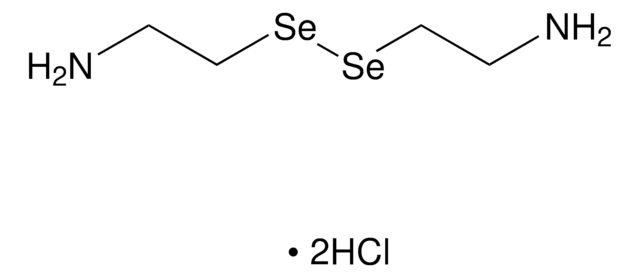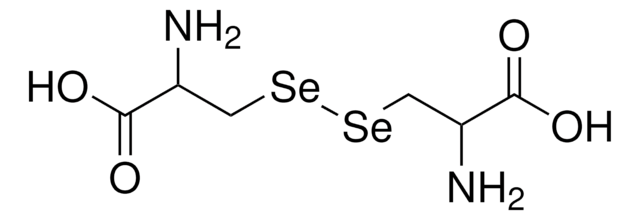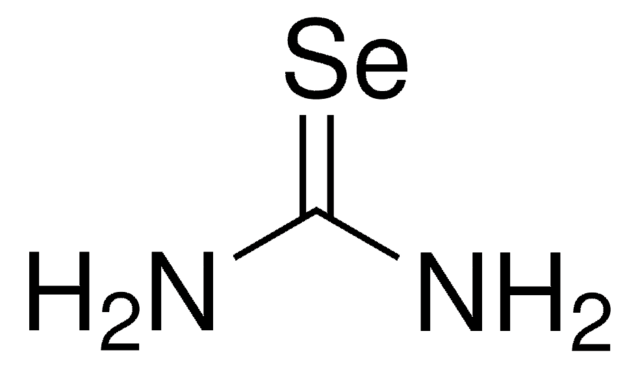Wichtige Dokumente
M6680
Se-(Methyl)selenocysteine hydrochloride
≥95% (TLC)
About This Item
Empfohlene Produkte
Qualitätsniveau
Assay
≥95% (TLC)
Lagertemp.
−20°C
SMILES String
Cl.C[Se]C[C@H](N)C(O)=O
InChI
1S/C4H9NO2Se.ClH/c1-8-2-3(5)4(6)7;/h3H,2,5H2,1H3,(H,6,7);1H/t3-;/m0./s1
InChIKey
JMPVTFHGWJDSDV-DFWYDOINSA-N
Allgemeine Beschreibung
Anwendung
Biochem./physiol. Wirkung
Anwendung
Signalwort
Danger
H-Sätze
Gefahreneinstufungen
Acute Tox. 3 Inhalation - Acute Tox. 3 Oral - Aquatic Acute 1 - Aquatic Chronic 1 - STOT RE 2
Lagerklassenschlüssel
6.1A - Combustible acute toxic Cat. 1 and 2 / very toxic hazardous materials
WGK
WGK 3
Flammpunkt (°F)
Not applicable
Flammpunkt (°C)
Not applicable
Analysenzertifikate (COA)
Suchen Sie nach Analysenzertifikate (COA), indem Sie die Lot-/Chargennummer des Produkts eingeben. Lot- und Chargennummern sind auf dem Produktetikett hinter den Wörtern ‘Lot’ oder ‘Batch’ (Lot oder Charge) zu finden.
Besitzen Sie dieses Produkt bereits?
In der Dokumentenbibliothek finden Sie die Dokumentation zu den Produkten, die Sie kürzlich erworben haben.
Kunden haben sich ebenfalls angesehen
Artikel
Antioxidants protect biological systems from oxidative damage produced by oxygen-containing free radicals and from redoxactive transition metal ions such as iron, copper, and cadmium.
Chromatograms
application for HPLCUnser Team von Wissenschaftlern verfügt über Erfahrung in allen Forschungsbereichen einschließlich Life Science, Materialwissenschaften, chemischer Synthese, Chromatographie, Analytik und vielen mehr..
Setzen Sie sich mit dem technischen Dienst in Verbindung.












